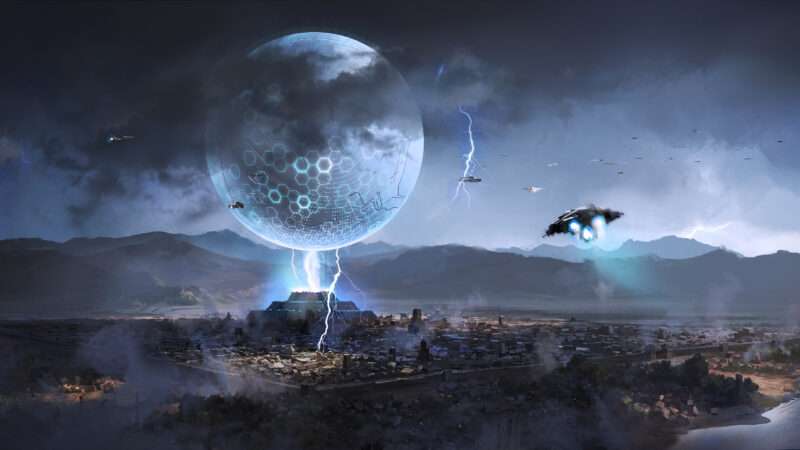
"We have no material, we have detected no emanations, within the UAP [unidentified aerial phenomena] task force that would suggest it is anything non-terrestrial in origin," testified Scott Bray, deputy director of naval intelligence. Bray made this claim last week during the first congressional hearing on the military's information about unidentified flying objects (UFOs) in 50 years. A skimpy June 2021 report to Congress noted that American military pilots had observed more than 140 cases of UAPs since 2004.
In a new article in Proceedings of the Royal Society, astrobiologists Michael Wong (Carnegie Institution for Science) and Stuart Bartlett (California Institute of Technology) offer an explanation for the lack of evidence that UAPs are extraterrestrial exploration vehicles: ETs haven't shown up either because they burn out or transcend to quiescent homeostasis.
The two researchers are addressing the Fermi paradox. "Where are they?" famously asked Italian physicist Enrico Fermi over lunch in the 1950s. By "they," he meant space aliens. Fermi figured that if the galaxy contained space-faring civilizations, it would only take them a few tens of millions of years to populate it. Thus, the lack of close encounters of a third kind is a puzzle.
Wong and Bartlett base their speculations about the possible trajectory of exo-civilizations on the theory of superlinear scaling that characterizes the development of cities devised by University of Chicago complexity theorist Luis Bettencourt and his colleagues back in 2007. They found that as cities get bigger, there are increasing returns with increasing size. For example, per capita wealth, productivity, and innovation all rise faster than the urban population.
Wong and Bartlett argue that the growth and increasing interconnection of data networks result essentially in a global city that is now characterized by superlinearity. The upshot, according to Wong and Bartlett, is that "unbounded growth will occur, leading to infinite population (and hence infinite demand on resources) in a finite time. If such a 'singularity' is approached unchecked, the system will eventually exceed its energy supply and collapse (or significantly regress)."
Civilizations can at least temporarily forestall collapse through innovation resets that shift resource use and population trajectories. Catastrophic burnout occurs when the capacity for innovation is overwhelmed as the time between the need for new resets grows ever shorter as superlinear growth continues.
On the other hand, Wong and Bartlett suggest that some exo-civilizations might become aware of the unsustainability of their superlinear trajectory. In order to avoid impending collapse, such alien civilizations would engage in "homeostatic awakenings" in which they choose to transcend the pursuit of unbounded growth. Thus, the Fermi paradox is resolved: No alien visitors to Earth have been detected because they either destroy themselves or they choose to stay quietly at home.
Wong and Bartlett conclude with this admonition: "A deeper theoretical understanding of the dynamics that determine the value of β [superlinearity] may reveal suggestions for how we can enact a fundamental change to our 'way of life' that helps us consciously avoid self-induced collapse."
It turns out that their analysis is not just a solution to the Fermi paradox, but a gussied-up Malthusian parable they think is applicable to us Earthlings.
The post Alien Civilizations Either Self-Destruct or Transcend to 'Homeostatic Awakening,' Argues New Study appeared first on Reason.com.







